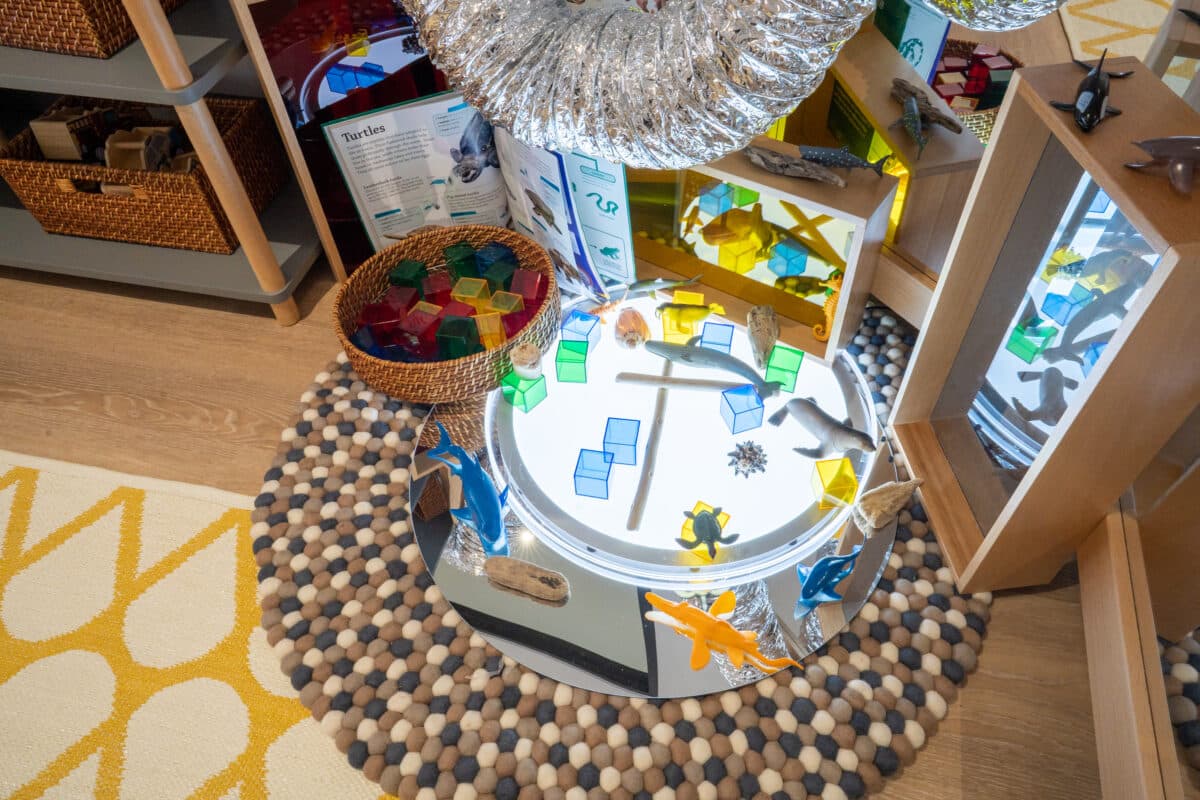Reggio Emilia and Montessori: What’s the Difference?
13 June 2023

Reggio Emilia or Montessori? What do they mean and which is right for your child? Read on for our breakdown of these two popular early education philosophies 👇
Does this sound familiar: you’re researching childcare services and two phrases keep appearing – Reggio Emilia and Montessori. It’s easy to get lost in the wording as they both talk about child-centred curriculums and non-traditional learning.
But what if we told you these early learning approaches differ in some really important ways?
In this post, we break down the Reggio Emilia and Montessori approaches to early childhood education to help you decide which is the perfect fit for your child.
What is the Reggio Emilia Approach?
The Reggio Emilia approach, named after the Italian town where it was founded by Loris Malaguzzi, emphasises project-based learning, creativity, and community involvement.
Reggio Emilia classrooms, often connected by a central piazza for collaboration and discussion, are filled with natural materials, light, and open spaces. Children are seen as active participants in their own learning journey. They co-construct knowledge and spark curiosity alongside their peers and Educators.
The Reggio Emilia approach identifies three teachers in children’s learning:
- The teacher – responsible for constructing and guiding learning experiences. Educators provoke discussion, ask open-ended questions, and explore emerging interests with the children. In other words, they’re co-learners.
- The parent – the home environment is key to building on meaningful learning experiences. Therefore, parents are encouraged to take an active role in emerging interests, projects, and hands-on learning.
- The environment – learning spaces are designed to be aesthetically pleasing, stimulating, and interactive. Artwork, natural materials, and plenty of colour are commonplace in Reggio Emilia classrooms to inspire creativity and imagination.
What is the Montessori Approach?
Developed by Dr. Maria Montessori in the early 1900s, this approach values children’s need to explore, discover, and learn at their own pace.
The Montessori classroom is a carefully prepared environment where children can choose their own activities from a range of self-correcting materials such as puzzles and loose parts. These materials encourage children to problem-solve instinctively and without the need for strict instructions.
Additionally, the Montessori approach features hands-on learning through workshops. These aim to build independence, self-discipline, and practical life skills. Through interactive learning experiences, the Montessori approach encourages self-directed learning, rather than in large groups.

How do Reggio Emilia and Montessori Differ?
While both Montessori and Reggio Emilia value child-centred learning, they’re also different in their approach to curriculum.
Reggio Emilia embraces an emergent curriculum which evolves based on the interests and inquiries of the children. Educators encourage these interests with intentional provocations.
For example, if a child takes an interest in space, and Educator may provide them with different materials to create a star chart. This intentional experience introduces the child to different sensations – the feel of the materials and the sounds they make – while also acting as the foundation for continued learning.
How big is space? What is the Milky Way? How many planets are there in the solar system?
Montessori on the other hand follows a pre-determined curriculum, with specific materials and activities designed to support children’s development across different areas and outcomes.
Moreover, the Montessori curriculum favours observation by teachers, whereas Reggio Educators favour documentation of observations to share with parents and signpost learning milestones.
The Reggio Emilia approach emphasises community and group-based learning, while Montessori values independent and small group learning.
For a full breakdown of the differences, see the table below!
| Montessori | Reggio Emilia | |
| Learning style | Child-centric, non-traditional. | Child-centric, non-traditional |
| Role of the Educator/Teacher | Observer and facilitator of knowledge. | Collaborator and co-learner. Educators guide learning experiences and ask open-ended questions. |
| Method | Learning through play and self-correcting materials alone or in small groups. Strict development stages. | Children work in small groups in project-based learning. Community and parental involvement encouraged. |
| Curriculum | Pre-determined and can be adapted to primary and secondary education. | Fluid curriculum which is adapted to emerging interests and unique learning styles. |
| Focus | Independence. | Independence and collaboration. |
| Evidence collection | Observation. | Observe and document. |
| Goal | To form independent and curious learners. | To nurture children to become lifelong learners and citizens of the world. |

Which Approach is Right for Your Child?
Overall, it’s important to remember that there’s no one-size-fits-all approach to early childhood education. Each child is unique, with their own set of interests, learning styles, and needs. The Montessori approach and the Reggio Emilia approach each offer distinct educational experiences.
While some children may thrive in the Montessori system, others blossom in the collaborative environment of Reggio Emilia. The best way to decide is to visit centres, talk with educators, research widely, and consider all approaches. In other words, trust your intuition to decide which approach resonates with your child’s unique personality and stage of development.
🍃 To tour one of our beautiful Centres, please click here. Otherwise, check out our website to register your interest at Explorers Early Learning today!